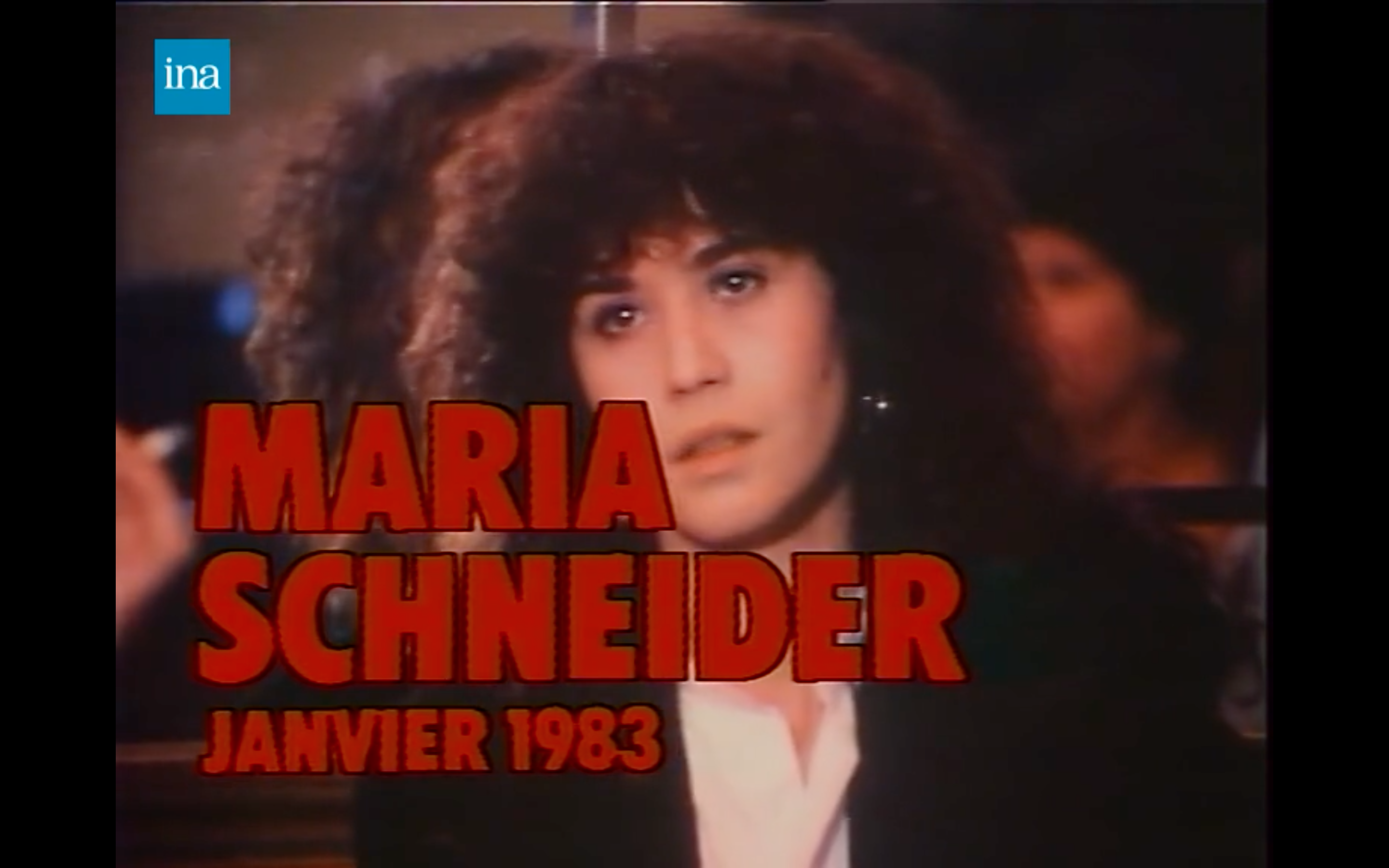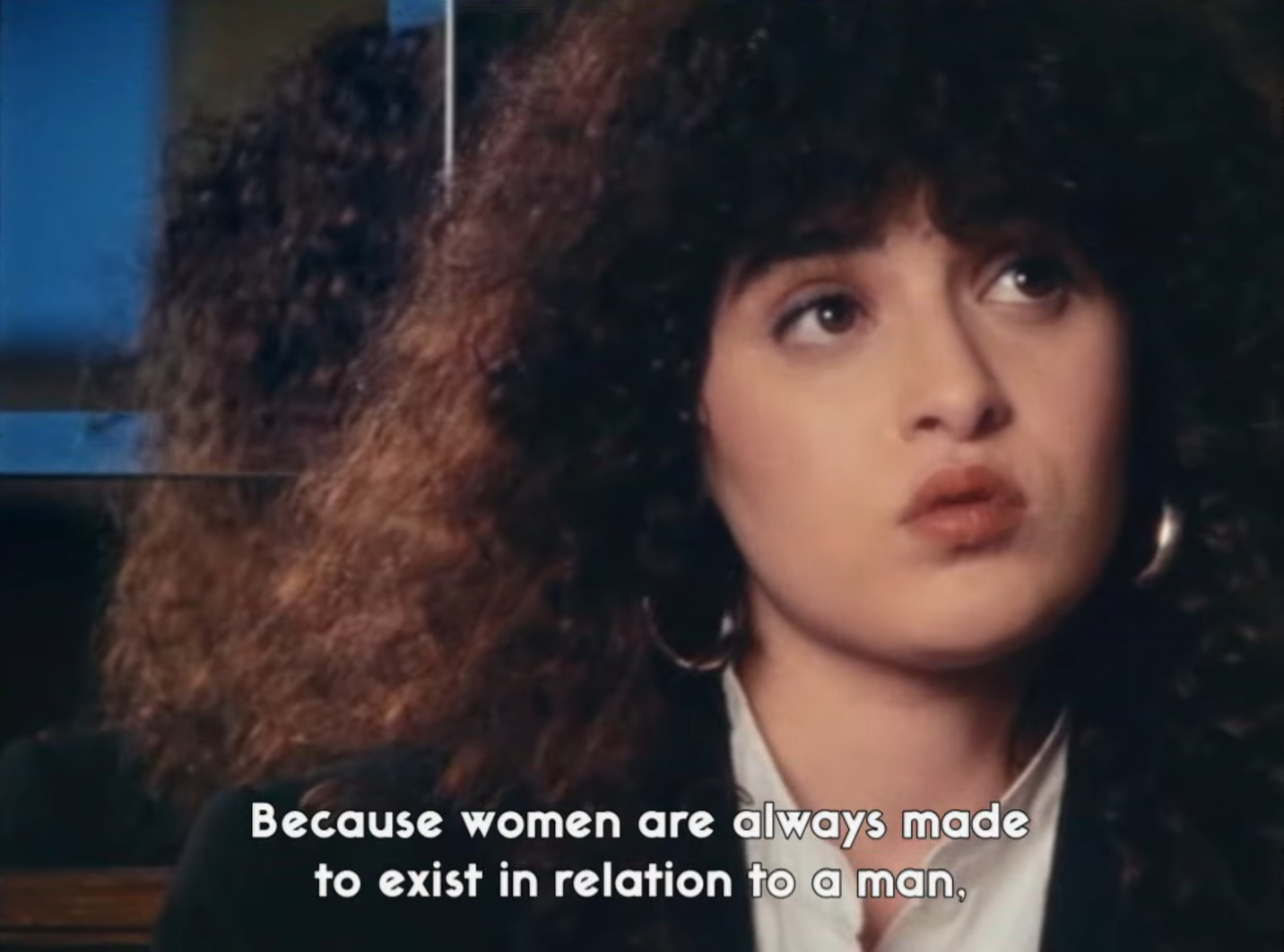Based on a filmed interview with Maria Schneider for the program “Cinéma,
Cinémas,” this film won the César Award for Best Documentary Short Film.
Three actresses reenact the original interview in a meticulously reconstructed
setting and staging, giving the actress’s words a new relevance.
 The original interview was shot on film in a café. Maria Schneider recounted events that had taken place ten years earlier during the filming of Last Tango in Paris. She accused director Bernardo Bertolucci and Marlon Brando of manipulating and using her to achieve their ends.
The original interview was shot on film in a café. Maria Schneider recounted events that had taken place ten years earlier during the filming of Last Tango in Paris. She accused director Bernardo Bertolucci and Marlon Brando of manipulating and using her to achieve their ends.
Cinematographer Pascale Marin answers a few questions about the making of this “hoax.” Colorist Mathilde Delacroix and director Elisabeth Subrin join the conversation.
The original film (with the real Maria Schneider) does not appear in this montage, which deprives the viewer of the reference. Did you consider including it anyway?
Elisabeth Subrin, director: No, I never considered it because it is not essential for the audience to appreciate the work. Including the original Maria would be superfluous and would distract from the film’s message. The film focuses on Maria’s legacy, on the resonance of her
words in the experiences and traumas of other women. Besides, what characterizes authenticity?
What is the connection between this form (mirrored testimonies, reflections, pretense, the relationship between the original and the copy, etc.) and the content, that is the longstanding contempt for actresses, the transformation of actresses into decorative figures/objects/toys in cinema?
Pascale Marin: After watching the original interview over and over again, rather than wondering about the relationship between form and content, I connected with the person being interviewed. And I was struck by the interviewer’s lack of empathy, which bordered on cruelty. How would I have reacted in the cameraman’s place?
You can feel Maria Schneider’s nervousness, the way she tries to escape by lighting cigarette after cigarette. If she could, she would disappear behind the smoke.
And the distress in her eyes as she looks at the camera and begs them not to use images from “Last Tango in Paris” to illustrate the interview, she addresses the person filming directly: “Once again, are you going to watch me struggle without doing anything?” She doesn’t say these words, but I hear them.
The film is based on the most faithful imitation possible of the original interview. What were the stages of this reconstruction (decor, makeup, lighting, recording medium, color grading, etc.)?
Pascale Marin: It was indeed a very close collaboration in terms of sets, lighting, support, and camera work. As for the set design, we made several decisions that determined the realism of the set, such as the number of flats to use, the use of one or more mirrors to recreate the space in reflection, and filmed tests of paint colors to achieve the desired effect.
 For the lighting, we sought to remain consistent with the original interview setup, while having to reinvent the space in the reflection. This required meticulous work to find the right lighting and settings.
For the lighting, we sought to remain consistent with the original interview setup, while having to reinvent the space in the reflection. This required meticulous work to find the right lighting and settings.
As for the medium, I had no certainty as to the brand of film used in the original interview (Kodak, Fuji, Agfa, etc.), but a “high-sensitivity” color film from the 1980s, such as a 250T type 7293 or 8528, seemed consistent with the era and context, a café interior at the end of the day. In 2022, my options were more limited, so I opted for Kodak 500T 7219, thinking that its graininess would be as close as possible to a film from the past, less sensitive but older.
Finally, for the camera and lens, I chose an Aaton, and we tested several zooms during the test shoots: a Fujinon 19×90, an Angénieux 28×76, and a Canon 11.5×138. I chose the latter for its focal range and, again, to ensure consistency with the original document, an interview most likely shot with a small Super 16 zoom lens. I filtered it with a Soft FX 1/2.
The program “Cinéma, Cinémas” was always shot on location and on film. Do you know where the original interview took place?
No, we explored quite a few leads to try to identify this café, but without success. Even if we had found it, the decor would probably have changed too much to meet our requirements for similarity. That’s why we decided to shoot in a studio.
It certainly looks like film, but have digital formats been considered?
The film was shot on Super 16, like the original show. Digital was not considered.
Mathilde, how did you approach this project and participate in the development of the final image?
Mathilde Delacroix, colorist: I was contacted by Hélène Olive, the producer, after the film was edited. She was looking for someone with experience in film to recreate the look of a workflow from that era. At the time, I had no idea that it was Pascale, with whom I had already worked elsewhere, who had created the film’s image. I only found out later.
Hélène explained Elisabeth’s approach and her desire to “blend” Manal’s performance with the original archive footage. After this initial discussion with Hélène, I asked her for an excerpt from the rushes so that I could start working before meeting with Elisabeth.
The discussion with Hélène and the view of the archive immediately made me think of a way of working with the image by seeking to lose information, particularly in low light and skin details, in order to somehow find a workflow that was “poorer” in terms of detail precision. So I ran a few tests and discussed them with Elisabeth via Zoom. She seemed very interested in this angle of research, so we continued these tests when she came to Paris to finalize post-production. The goal was to find the right balance so that the image would not appear too degraded when projected in DCP. We therefore focused on this first interview to recreate, as accurately as possible, the feeling we had when viewing the archive (glow effect on the skin, loss of hair detail, background rendering, etc.).
Starting with this scan, shot by Pascale, after several intermediate steps, in order to begin to find a sense of diffusion, lack of definition, and softness in the image, I created a new base image for the final color grading. We then worked on the two other “variations” of the interview to gradually bring about a more natural treatment of the rushes shot in S16, mixing this “archive” rendering with the original scan
and making the latter increasingly present. We had to continue and update this mirroring “game” between the different interviews, as the actresses and the team had already done during filming.
The film ends with a zoom out that literally puts everything into perspective. Whose idea was that?
Pascale Marin: Surprisingly, even though she had seen it hundreds, if not thousands of times, it was me who pointed out to Elisabeth that the final movement was not just a pan shot but a very pronounced zoom out. It was following our discussion on this subject that she decided to end the film with the discovery of the film set, like a return to the situation in “Last Tango in Paris” where, this time, the actress
would have the opportunity to leave the premises.
The film also exists in the form of a museum installation called “The Listening Takes.”
https://www.brown.edu/campus-life/arts/bell-gallery/exhibitions/elisabeth-subrin-listening-takes
Pascale Marin: We planned this format by filming each actress in silence for the entire duration of the interview (just over 7 minutes). The exhibition takes the form of three screens: one speaks, the other two listen, and the speech is thus relayed from one to the other.
______
1st assistant camera: Charlotte Michel
2nd assistant camera: Xavier Rubino
Gaffer: Diarra Sourang
Pre-light electrician: Hadrien Perrot
Pre-light key grip: Laura Marret
Colorist: Mathilde Delacroix
Camera, lighting, grip, and studio equipment: TSF
Laboratories: Kafard Films, Hiventy, Micro Climat Studios
___
Interview by Pascal Montjovent



